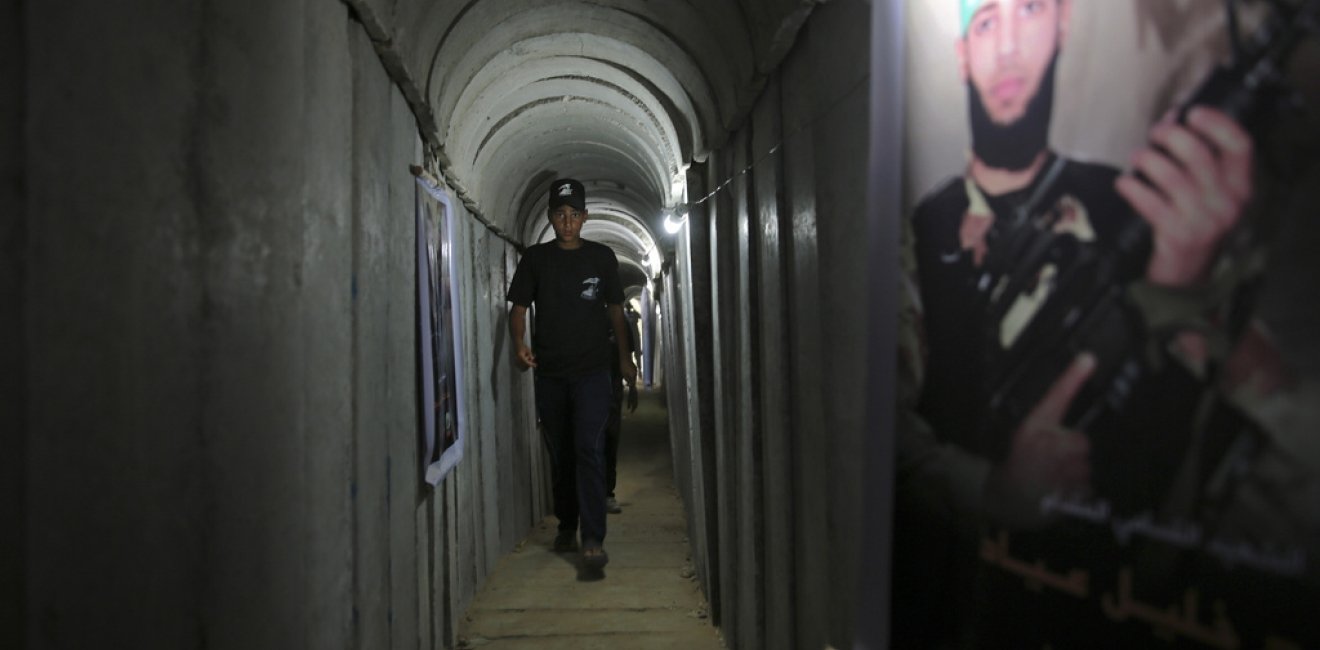
A blog of the Wilson Center

The use of underground tunnels in crime and battle is hardly new—especially in the Middle East. The scale, placement, sophistication, and targeting of civilians brought to the Gazan tunnels by Hamas is.
Reports say that a 300-mile-long network of underground tunnels, controlled by Hamas, runs under much of Gaza. Stretches of the tunnels are concrete reinforced, equipped with electricity and communications, have stores of food and water, and are large enough to host small gatherings of people, and even permit vehicles to travel through them. Some Israeli military experts say that in a few places, tunnel structures could run as deep as 200 feet.
Criminals and combatants have been using tunnels for centuries. Part of what made WWII’s Battle of Iwo Jima so gruesome and bloody were the tunnels dug by Japanese soldiers deep into Mount Suribachi that helped them defend the island against Allied Forces. In Vietnam, the Viet Cong used an intricate network of tunnels to both ambush American troops and hide out from soldiers on patrol. In the Middle East, tunnels were constructed many centuries ago by resistance forces—including Jewish rebels—to hide from Roman forces, and over the years, they’ve been used to help smuggle goods and people across borders. In recent years, ISIS used tunnels in various parts of Iraq to evade detection and capture by Coalition forces.
Like other places in the region, tunnels beneath Gaza were used for years to hide and smuggle goods. However, Hamas dramatically expanded the tunnel network, and how it’s used, in the early 2000s. In 2001, for example, Hamas insurgents used a growing tunnel system to explode a bomb under an Israeli military post. In 2006, it was used in the abduction of an Israeli soldier who was then held captive for five years.
It was in 2007, when Hamas took control of Gaza, that construction of the tunnels was rapidly expanded, and their use became integral to the group’s plans to attack and destroy Israel’s presence. The tunnels have been used to store weapons, house Hamas control centers, train fighters, hold prisoners, and in 2014, to enter the country and attack border control. The tunnels have essentially enabled Hamas to conduct operations without much interference from Israel because they weaken the ability of traditional GPS, surveillance, and night vision systems to determine their precise locations.
Both Israel and Egypt have tried to destroy the tunnel system over the years—Egypt to prevent the cross border flow of illegal goods and militants. Roughly a decade ago, as part of its Operation Protective Edge, Israel ramped up its efforts to obliterate the tunnel network. The Israel Defense Forces reportedly found and demolished more than 30 tunnels, although at the time, Hamas disputed that.
Beyond the obvious military imperative to destroy Hamas’s ability to use the Gazan tunnels in terrorist operations and its hoarding of supplies, there’s another reason Israeli forces are focusing so much on the tunnel network: the role they play in Hamas’ human shield and propaganda strategy.
Israeli officials say that one of the group’s main control centers is located under the al-Shifa hospital in Gaza. They maintain that there’s plenty of evidence that Hamas is using tunnels under schools, hospitals, and mosques to serve as hiding places for weapons and militants. Hamas is also holding its hostages in the tunnels: An 85-year old woman who was captured by Hamas on October 7 told authorities that she was transported for miles through underground tunnels and even met up with other hostages in large underground rooms.
The tunnel system, referred to by some as the Gaza Metro because of its reach and sophistication, also runs under one of the most densely populated areas on earth—more dense than the sites of urban fighting American forces faced in Iraq. Any effort to enter or take apart the tunnels will inevitably lead to destroying civilian sites and infrastructure above ground—and the deaths of innocent civilians. All of this makes it harder for Israel to randomly bomb, seal off or attack stretches of the network.
How each side, Israel and Hamas, has treated the presence of civilians in Gaza shows just how important the placement of tunnels near civilian sites is to Hamas’s strategy. Shortly after the terrorist group’s brutal attack on October 7, the Israel Defense Force (IDF) used multiple messaging channels to warn Palestinians to leave communities in northern Gaza—even dropping leaflets from the sky—in preparation for attacking the tunnel network. Hamas used its communications tools to urge civilians to stay right where they were. Then, when civilian sites in Gaza were damaged or destroyed by the IDF in its military operations, as Israeli authorities strenuously argued to the outside world that these sites were connected to Hamas’s terrorist leadership, Hamas, using unverifiable statistics and stories, pushed just as hard to argue the opposite…that the sites damaged were purely civilian.
Tunnels have been used by militants and criminals around the world for a very long time. In Gaza, it’s not merely the scale and sophistication of the tunnel network that has made it so potent and painful, but also its brazen use in a war in which thousands and thousands of innocents are being used as human shields, captured, or killed.
This blog was researched and drafted with the assistance of Carlotta Murrin.
Author

Explore More in Stubborn Things
Browse Stubborn Things
Spying on Poachers

China and the Chocolate Factory

India: Economic Growth, Environmental Realities
